This article was co-authored by wikiHow Staff. Our trained team of editors and researchers validate articles for accuracy and comprehensiveness. wikiHow's Content Management Team carefully monitors the work from our editorial staff to ensure that each article is backed by trusted research and meets our high quality standards.
There are 10 references cited in this article, which can be found at the bottom of the page.
This article has been viewed 33,862 times.
Learn more...
If you’re suffering from a sinus infection or blockage, grapefruit seed extract could be an effective solution. While there’s no scientific proof that it can clear up a sinus infection, there is evidence that it can kill germs.[1] Purchase liquid extract online or at your local health store, add one to four drops to a sterile saline solution, and use a neti pot, squeeze bottle, or nasal bulb to flush your sinuses with the solution. To stay on the safe side, consult your doctor before flushing your sinuses or using grapefruit seed extract. There is no good evidence that grapefruit seed extract is effective and in some cases could be harmful.[2]
Steps
Flushing Your Sinuses
-
1Mix liquid grapefruit seed extract with salt and sterilized water. Combine 1/4 teaspoon of kosher or canning salt with 8 ounces (240 mL) of lukewarm sterile water. If it’s your first time, add one drop of grapefruit seed extract. Add up to four drops if you’ve tried it before and it hasn’t irritated your nasal passages.[3]
- Use bottled distilled water or tap water that has been boiled for three to five minutes and cooled until it’s lukewarm. Never use untreated tap water to irrigate your sinuses.[4]
- Salt that contains iodine, non-caking agents, and preservatives can irritate nasal tissue, so use a non-iodized salt, like kosher, canning, or pickling salt.[5]
-
2Add the solution to your nasal irrigation device. Pour half of your solution into your neti pot or squeeze bottle, or draw it into your nasal bulb. If you don’t already have one, you can find a nasal irrigation device online or at your local drug store.[6] Neti pots, squeeze bottles, and nasal bulbs are all effective options, but they each have pros and cons.
- Squeeze bottles and bulbs can be more effective because they expel the solution with pressure, while the solution just gently flows out of a neti pot. However, if you squeeze the bulb or bottle too hard and spray the solution too forcefully, you could damage nasal and throat tissues.[7]
Advertisement -
3Tilt your head and insert the device’s spout into your upper nostril. Lean over a sink, and tilt your head so your forehead and chin are level. Place your device’s spout in your upper nostril (the one that points to the ceiling as your head is tilted). Gently squeeze or pour the solution into your upper nostril so it drains out of your lower nostril.[8]
- Don’t insert the spout forcefully or push it too far up your nose.
-
4Breathe through your mouth as you flush your sinuses. Do not try to breathe through your nose while pouring the solution through your nostrils. Try to keep your nasal passages closed off from your throat so the solution flows through your sinuses and out of your lower nostril instead of into your mouth.[9]
- If you’re not sure how to close off your nostrils from your throat, try starting to make a “K” sound, then hold your nasal passage in place so you can breathe through your mouth but not through your nose.[10]
-
5Repeat the procedure on your other nostril. After you’ve flushed one nostril, pour the other half of your solution into the irrigation device. Tilt your head to the other side, and gently squeeze or pour the solution into your other nostril.[11]
-
6
Using a Grapefruit Seed Extract Flush Safely
-
1Ask your doctor about harmful drug interactions. Grapefruit products can cause harmful interactions with warfarin, calcium channel blockers, and several other medications. Always consult your doctor before using grapefruit seed extract or any other supplement or herb.[14]
-
2Clean your nasal irrigation device after each use. Fill a bowl with hot, boiled water (let it cool until it’s safe to touch) and dish soap. Scrub your pot or bottle with a sterile brush, or draw the soapy water into your bulb syringe. Rinse it with soap-free sterile water, then let it dry in a well-ventilated area.[15]
- If you have a bulb, pump it several times to remove excess water and prop it up so it dries with the syringe tip facing down.
- Most neti pots are dishwasher safe, but you should place it on the top rack to avoid damaging it during the wash cycle.
-
3Start by adding one drop of extract to the saline solution. You’ll want to see how your body reacts to grapefruit seed extract, so just add one drop to the saline solution the first time you use it. If you don’t experience any burning or discomfort, try adding another drop or two the next time you flush your sinuses.[16]
- You can flush your sinuses one to three times per day.
-
4Don’t flush your sinuses if your nasal passages are completely blocked. An irrigation device won’t work if your nasal passages are completely blocked. You could end up forcing water into your ears, which could cause pain or infection. Further, severely blocked nasal passages could be due to inflammation or a physical blockage, like a polyp.[17]
- See your doctor if your nasal passages are completely blocked.
Warnings
- Never share your nasal irrigation device with anyone.⧼thumbs_response⧽
- Call your doctor if you experience nosebleeds, fever, pain, or headaches.[20]⧼thumbs_response⧽
References
- ↑ https://www.ncbi.nlm.nih.gov/pubmed/12165191
- ↑ https://sciencebasedmedicine.org/not-natural-not-safe-grapefruit-seed-extract/
- ↑ https://ridgeviewdental.com/blog/natural-or-herbal-supplements-used-in-dentistry
- ↑ http://healthywa.wa.gov.au/Articles/N_R/Nasal-irrigation-is-it-safe
- ↑ http://www.aaaai.org/conditions-and-treatments/library/allergy-library/saline-sinus-rinse-recipe
- ↑ https://medlineplus.gov/ency/patientinstructions/000801.htm
- ↑ http://abcnews.go.com/Health/AllergiesNews/battle-nasal-washes/story?id=5977773
- ↑ https://www.fda.gov/ForConsumers/ConsumerUpdates/ucm316375.htm
- ↑ https://www.fda.gov/ForConsumers/ConsumerUpdates/ucm316375.htm
- ↑ https://www.wsj.com/articles/SB121063042717286353
- ↑ https://www.fda.gov/ForConsumers/ConsumerUpdates/ucm316375.htm
- ↑ https://medlineplus.gov/ency/patientinstructions/000801.htm
- ↑ http://www.aaaai.org/conditions-and-treatments/library/allergy-library/saline-sinus-rinse-recipe
- ↑ https://medlineplus.gov/druginfo/natural/946.html
- ↑ https://medlineplus.gov/ency/patientinstructions/000801.htm
- ↑ https://ridgeviewdental.com/blog/natural-or-herbal-supplements-used-in-dentistry
- ↑ http://www.aaaai.org/conditions-and-treatments/library/allergy-library/saline-sinus-rinse-recipe
- ↑ https://medlineplus.gov/druginfo/natural/946.html
- ↑ https://www.fda.gov/ForConsumers/ConsumerUpdates/ucm316375.htm
- ↑ https://medlineplus.gov/ency/patientinstructions/000801.htm
-Step-4-Version-2.webp)
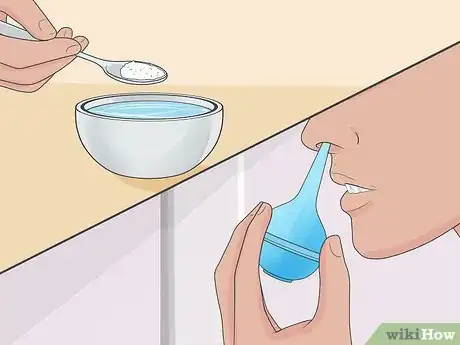
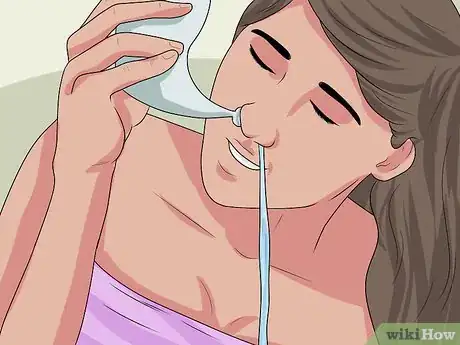
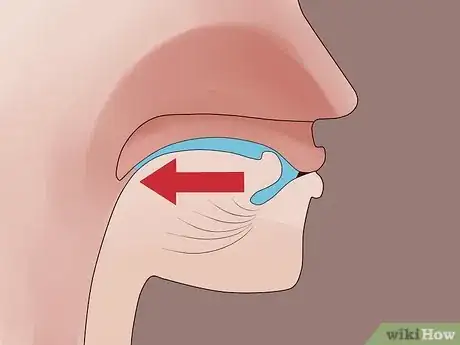
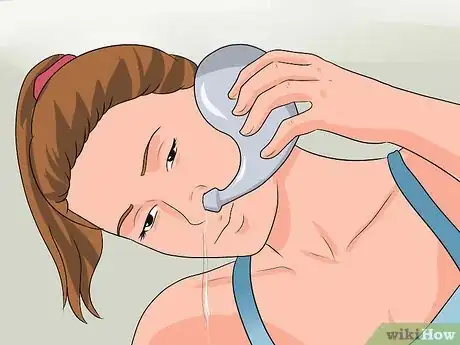
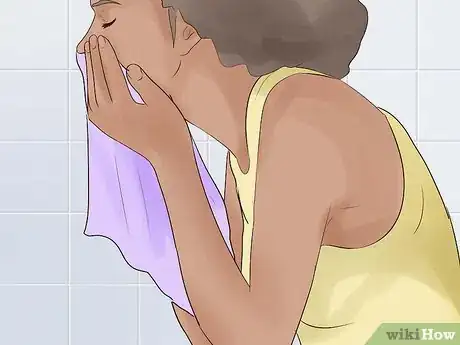

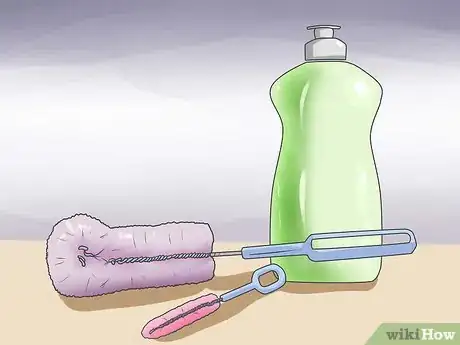




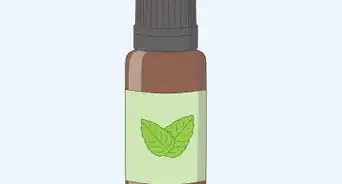





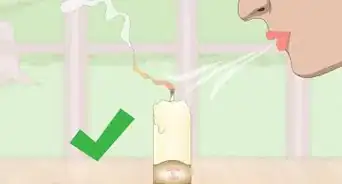
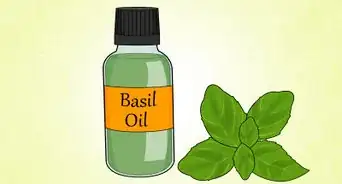
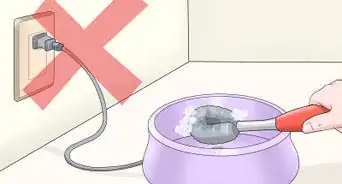









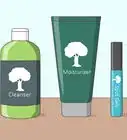
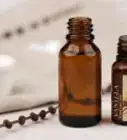
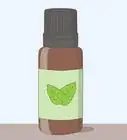



































Medical Disclaimer
The content of this article is not intended to be a substitute for professional medical advice, examination, diagnosis, or treatment. You should always contact your doctor or other qualified healthcare professional before starting, changing, or stopping any kind of health treatment.
Read More...